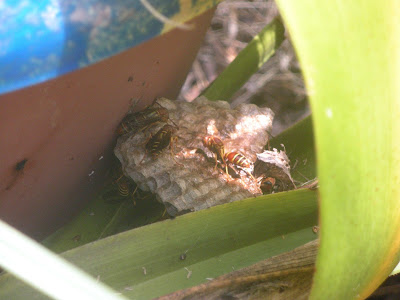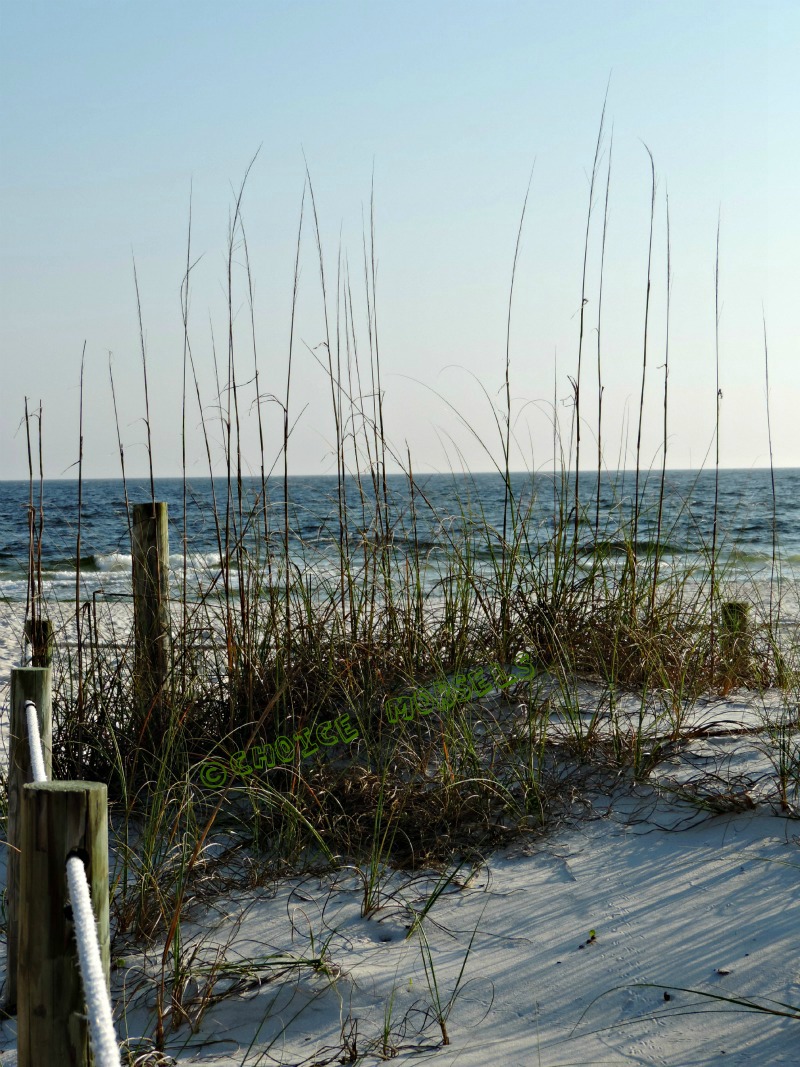Garden Pic Wednesday: Drainage Project
For Garden Pics today I have a shot of my a drainage project in-progress:
This is my back patio that we expanded with pavers a good many years ago. Having studied the flow of water around the house with these many rains this year, I decided this area needed a better drainage conduit. This only required me pulling up the outer row of pavers, digging a narrow trench that is angled the proper direction and filling it with drainage gravel and pea pebbles.
This is as far as I got, since I ran out of rock.Since we'll be busy this weekend, I'll have to finish it up next week sometime.
I also have an interesting picture of a paper wasp nest:
This one is attached to an Amaryllis leave curved under a pot next to my Pampas grass. I had no idea it was there until I practically bungled into it. I'd decided to trim up that Pampas earlier this week and the Hot Poker behind this pot, when I noticed quite a few bees flitting about.
This one is attached to an Amaryllis leave curved under a pot next to my Pampas grass. I had no idea it was there until I practically bungled into it. I'd decided to trim up that Pampas earlier this week and the Hot Poker behind this pot, when I noticed quite a few bees flitting about.
I stepped back and they settled down in the greenery again and I realized it was wasps. No, I wasn't stung, despite the fact I was stirring and jarring their nesting area pretty thoroughly.
Still, they just went back to minding their own business. And I'm quite glad of that.
 |
| Common Paper Wasps ( Polistes exclamans) Mutli-striped, small, about 3/4 inch size. You can see several working inside various cells along bottom row of nest. |
I spotted the exact location of this nest a bit later and today grabbed this photo.
Wasps are actually a beneficial garden insect--as long as they aren't building their nest in your entry way or other area where human traffic will disturb them.
They drink nectar in flowers, pollinating them, and also catch various other insects and caterpillars to paralyze with a sting, then stick in the egg cells in their paper nest for future young to feed on.
Since they are beneficial for that reason and since they're not in my way and I know where they are now, I'm leaving them to pursue life, liberty and happiness and do their job.
Since they are beneficial for that reason and since they're not in my way and I know where they are now, I'm leaving them to pursue life, liberty and happiness and do their job.
I like educating myself on insects common to my garden and I didn't really know there was more then one kind of paper wasp---but, guess what, there's a couple! These striped type in the photo above, common here in Florida, aren't the kind I remember in Indiana. The ones in Indiana were slightly larger and all reddish-brown in color, such as the photo below. These have a
single yellow stripe on their tail section.
These are Red or Carolina Wasps. Both types are common to eastern North America.
single yellow stripe on their tail section.
These are Red or Carolina Wasps. Both types are common to eastern North America.
 |
| Red or Carolina Paper Wasp (Polistes carolina ) Larger, about 1 inch in size. Nests are much bigger and broader also, up to 500 cells per nest. |
Due to the long holiday weekend I won't be posting again until after Labor Day!





Comments
You must be a dedicated gardener! I'm in awe of gardening skills. I'm excited to grow vincas in a pot on my porch!
Post a Comment
Thanks for leaving a comment!